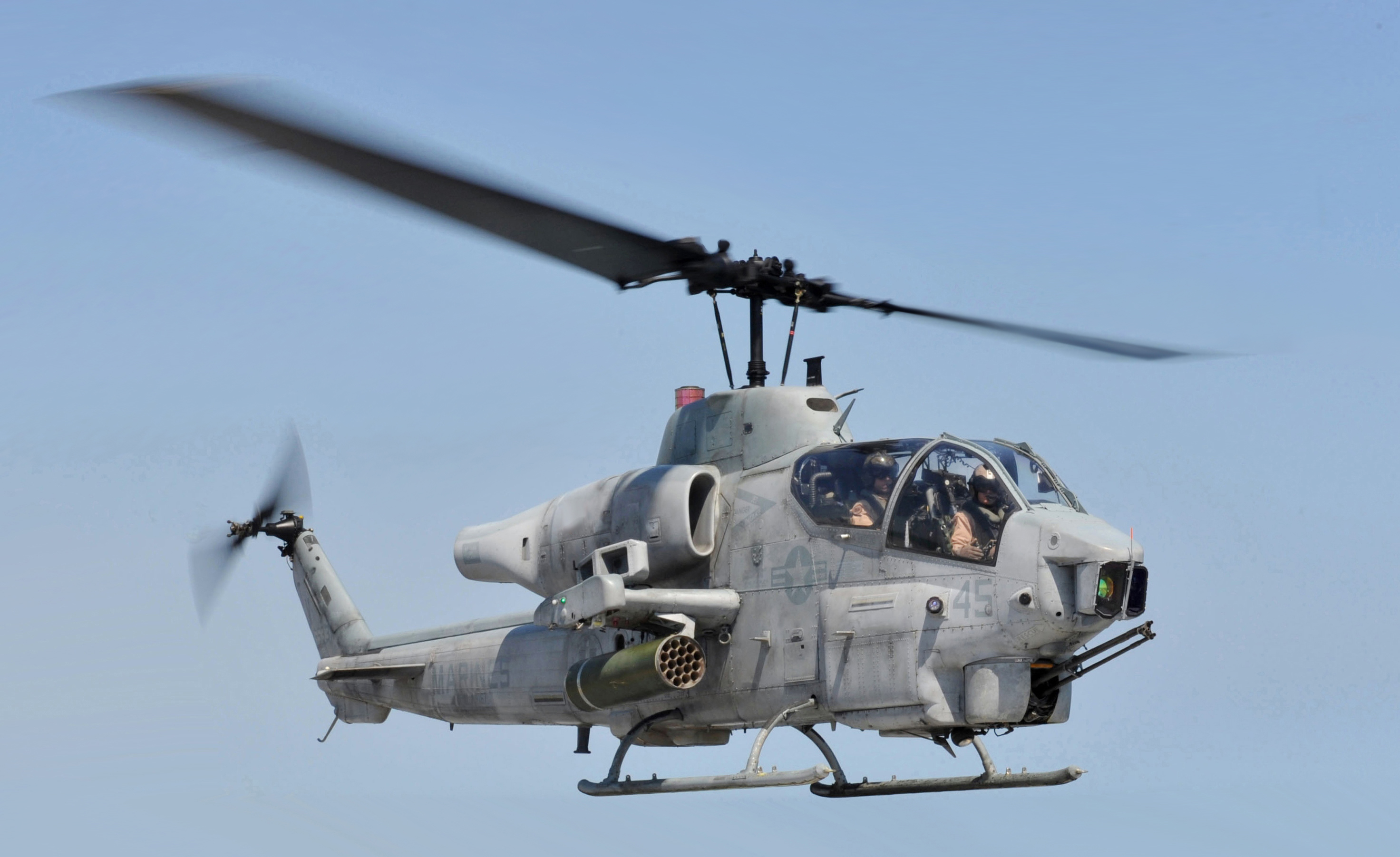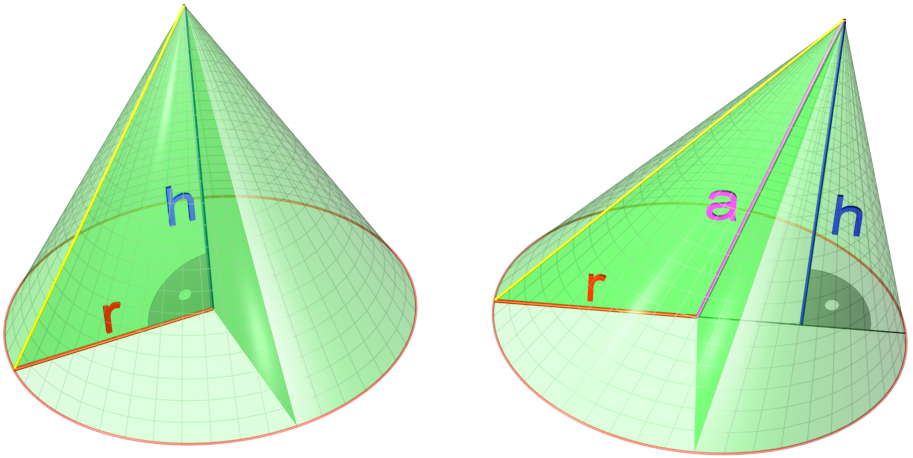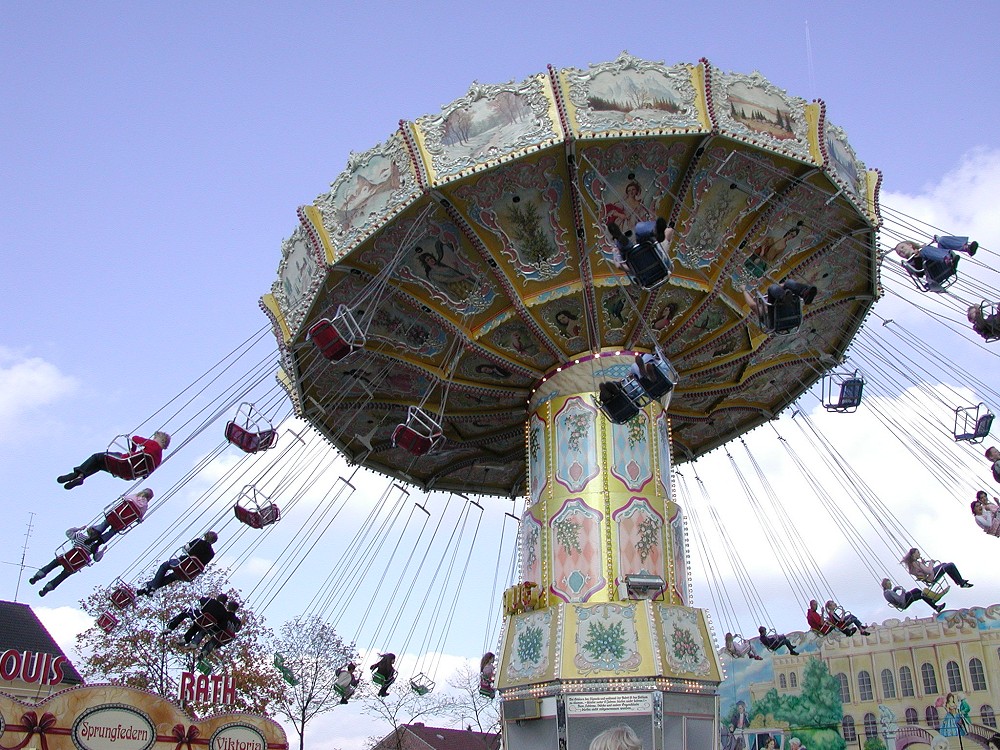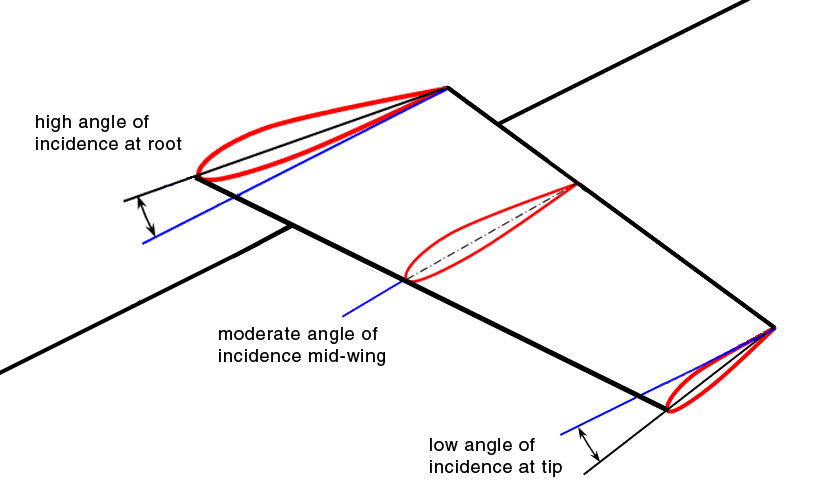|
Coning (aerodynamics)
Coning is a phenomenon which affects helicopter rotor discs, where the blades describe a cone shape as they rotate. For a helicopter on the ground, as the blades rotate, they describe a horizontal disc due to centrifugal force. However, as the helicopter generates lift, the blades are pulled upwards into a cone shape.Central Flying School: Manual of FlyingVolume 12: Helicopters Section 1-17. Coning results from the balancing of centrifugal and aerodynamic forces. The coning angle depends on RPM, gross weight and g-force. The ratio of aerodynamic forces to inertial forces is called the Lock number. Excessive coning can occur if the RPM is allowed to drop too low or the helicopter is operated at an excessive gross weight, or under turbulent conditions or if the helicopter experiences excessive g-force. An excessively coned disc will generate less lift due to reduced disc area. If rotor RPM drops too low, the centrifugal force will reduce until is no longer sufficient to balance ... [...More Info...] [...Related Items...] OR: [Wikipedia] [Google] [Baidu] |
Helicopter Rotor
On a helicopter, the main rotor or rotor system is the combination of several rotary wings (rotor blades) with a control system, that generates the aerodynamic lift (force), lift force that supports the weight of the helicopter, and the thrust that counteracts aerodynamic drag in forward flight. Each main rotor is mounted on a vertical mast over the top of the helicopter, as opposed to a helicopter tail rotor, which connects through a combination of drive shaft(s) and gearboxes along the tail boom. The blade pitch is typically controlled by the pilot using the helicopter flight controls. Helicopters are one example of rotary-wing aircraft (rotorcraft). The name is derived from the Greek words ''helix'', helik-, meaning spiral; and ''pteron'' meaning wing. Design principles Overview The helicopter rotor is powered by the engine, through the transmission, to the rotating mast. The mast is a cylindrical metal shaft that extends upward from—and is driven by—the transmission. ... [...More Info...] [...Related Items...] OR: [Wikipedia] [Google] [Baidu] |
Cone
In geometry, a cone is a three-dimensional figure that tapers smoothly from a flat base (typically a circle) to a point not contained in the base, called the '' apex'' or '' vertex''. A cone is formed by a set of line segments, half-lines, or lines connecting a common point, the apex, to all of the points on a base. In the case of line segments, the cone does not extend beyond the base, while in the case of half-lines, it extends infinitely far. In the case of lines, the cone extends infinitely far in both directions from the apex, in which case it is sometimes called a ''double cone''. Each of the two halves of a double cone split at the apex is called a ''nappe''. Depending on the author, the base may be restricted to a circle, any one-dimensional quadratic form in the plane, any closed one-dimensional figure, or any of the above plus all the enclosed points. If the enclosed points are included in the base, the cone is a solid object; otherwise it is an open surface ... [...More Info...] [...Related Items...] OR: [Wikipedia] [Google] [Baidu] |
Centrifugal Force
Centrifugal force is a fictitious force in Newtonian mechanics (also called an "inertial" or "pseudo" force) that appears to act on all objects when viewed in a rotating frame of reference. It appears to be directed radially away from the axis of rotation of the frame. The magnitude of the centrifugal force ''F'' on an object of mass ''m'' at the perpendicular distance ''ρ'' from the axis of a rotating frame of reference with angular velocity is F = m\omega^2 \rho. This fictitious force is often applied to rotating devices, such as centrifuges, centrifugal pumps, centrifugal governors, and centrifugal clutches, and in centrifugal railways, planetary orbits and banked curves, when they are analyzed in a non–inertial reference frame such as a rotating coordinate system. The term has sometimes also been used for the '' reactive centrifugal force'', a real frame-independent Newtonian force that exists as a reaction to a centripetal force in some scenarios. History F ... [...More Info...] [...Related Items...] OR: [Wikipedia] [Google] [Baidu] |
Lift (force)
When a fluid flows around an object, the fluid exerts a force on the object. Lift is the Euclidean_vector#Decomposition_or_resolution, component of this force that is perpendicular to the oncoming flow direction. It contrasts with the drag (physics), drag force, which is the component of the force parallel to the flow direction. Lift conventionally acts in an upward direction in order to counter the force of gravity, but it is defined to act perpendicular to the flow and therefore can act in any direction. If the surrounding fluid is air, the force is called an aerodynamic force. In water or any other liquid, it is called a Fluid dynamics, hydrodynamic force. Dynamic lift is distinguished from other kinds of lift in fluids. Aerostatics, Aerostatic lift or buoyancy, in which an internal fluid is lighter than the surrounding fluid, does not require movement and is used by balloons, blimps, dirigibles, boats, and submarines. Planing (boat), Planing lift, in which only the lower po ... [...More Info...] [...Related Items...] OR: [Wikipedia] [Google] [Baidu] |
Revolutions Per Minute
Revolutions per minute (abbreviated rpm, RPM, rev/min, r/min, or r⋅min−1) is a unit of rotational speed (or rotational frequency) for rotating machines. One revolution per minute is equivalent to hertz. Standards ISO 80000-3:2019 defines a physical quantity called ''rotation'' (or ''number of revolutions''), dimensionless, whose instantaneous rate of change is called ''rotational frequency'' (or ''rate of rotation''), with units of reciprocal seconds (s−1). A related but distinct quantity for describing rotation is ''angular frequency'' (or ''angular speed'', the magnitude of angular velocity), for which the SI unit is the radian per second (rad/s). Although they have the same dimensions (reciprocal time) and base unit (s−1), the hertz (Hz) and radians per second (rad/s) are special names used to express two different but proportional ISQ quantities: frequency and angular frequency, respectively. The conversions between a frequency and an angular frequency ... [...More Info...] [...Related Items...] OR: [Wikipedia] [Google] [Baidu] |
G-force
The g-force or gravitational force equivalent is a Specific force, mass-specific force (force per unit mass), expressed in Unit of measurement, units of standard gravity (symbol ''g'' or ''g''0, not to be confused with "g", the symbol for grams). It is used for sustained accelerations that cause a perception of weight. For example, an object at rest on Earth's surface is subject to 1 ''g'', equaling the conventional value of gravitational acceleration on Earth, about . More transient acceleration, accompanied with significant jerk (physics), jerk, is called Shock (mechanics), ''shock''. When the g-force is produced by the surface of one object being pushed by the surface of another object, the reaction force to this push produces an equal and opposite force for every unit of each object's mass. The types of forces involved are transmitted through objects by interior Stress (mechanics), mechanical stresses. Gravitational acceleration is one cause of an object's accelera ... [...More Info...] [...Related Items...] OR: [Wikipedia] [Google] [Baidu] |
Lock Number
In helicopter aerodynamics, the Lock number is the ratio of aerodynamic forces, which act to lift the rotor blades, to inertial forces, which act to maintain the blades in the plane of rotation. It is named after C. N. H. Lock, a British aerodynamicist who studied autogyros in the 1920s. Typical rotorcraft blades have a Lock number between 3 and 12, usually approximately 8. The Lock number is typically 8 to 10 for articulated rotors and 5 to 7 for hingeless rotors. High-stiffness blades may have a Lock number up to 14. Larger blades have a higher mass and more inertia, so tend to have a lower Lock number. Helicopter rotors with more than two blades can have lighter blades, so tend to have a higher Lock number. A low Lock number gives good autorotation characteristics due to higher inertia, however this comes with a mass penalty. Ray Prouty writes, "The previously discussed numbers: Mach, Reynolds and Froude are used in many fields of fluid dynamic studies. The Lock number is o ... [...More Info...] [...Related Items...] OR: [Wikipedia] [Google] [Baidu] |
Speed
In kinematics, the speed (commonly referred to as ''v'') of an object is the magnitude of the change of its position over time or the magnitude of the change of its position per unit of time; it is thus a non-negative scalar quantity. Introduction of the speed/velocity terminology by Prof. Tait, in 1882. The average speed of an object in an interval of time is the distance travelled by the object divided by the duration of the interval; the instantaneous speed is the limit of the average speed as the duration of the time interval approaches zero. Speed is the magnitude of ''velocity'' (a vector), which indicates additionally the direction of motion. Speed has the dimensions of distance divided by time. The SI unit of speed is the metre per second (m/s), but the most common unit of speed in everyday usage is the kilometre per hour (km/h) or, in the US and the UK, miles per hour (mph). For air and marine travel, the knot is commonly used. The fastest possible speed at wh ... [...More Info...] [...Related Items...] OR: [Wikipedia] [Google] [Baidu] |
Washout (aeronautics)
Washout is a characteristic of aircraft wing design which deliberately changes the lift distribution across the span of an aircraft’s wing. The wing is designed so that the angle of incidence is greater at the wing roots and decreases across the span, becoming lowest at the wing tip. This is usually to ensure that at stall speed the wing root stalls before the wing tips, providing the aircraft with continued aileron control and some resistance to spinning. Washout may also be used to modify the spanwise lift distribution to reduce lift-induced drag. Design considerations Washout is commonly achieved by designing the wing with a slight twist, reducing the angle of incidence from root to tip, and therefore causing a lower angle of attack at the tips than at the roots. This feature is sometimes referred to as geometrical washout, to distinguish it from aerodynamic washout. Wingtip stall is unlikely to occur symmetrically, especially if the aircraft is maneuvering. A ... [...More Info...] [...Related Items...] OR: [Wikipedia] [Google] [Baidu] |
Bell UH-1 Iroquois
The Bell UH-1 Iroquois (nicknamed "Huey") is a utility military helicopter designed and produced by the American aerospace company Bell Helicopter. It is the first member of the prolific Huey family, as well as the first turbine-powered helicopter in service with the United States military. Development of the Iroquois started in the early 1950s, a major impetus being a requirement issued by the United States Army for a new medical evacuation and utility helicopter. The Bell 204, first flown on 20 October 1956, was warmly received, particularly for the performance of its single turboshaft engine over piston engine-powered counterparts. An initial production contract for 100 ''HU-1A''s was issued in March 1960. In response to criticisms over the rotorcraft's power, Bell quickly developed multiple models furnished with more powerful engines; in comparison to the prototype's Lycoming YT53-L-1 (LTC1B-1) engine, producing , by 1966, the Lycoming T53-L-13, capable of , was bein ... [...More Info...] [...Related Items...] OR: [Wikipedia] [Google] [Baidu] |
Unequal Rotor Lift Distribution
Unequal rotor lift distribution is an effect where the blades of a helicopter rotor generate more lift at the rotor tips than at the rotor hub. A helicopter rotor blade is an airfoil, which is driven through the air to create lift. The lift generated is proportional to the square of the speed. Because the tips of the rotating blades travel much faster through the air than the parts of the blades near the hub, they generate much more lift. If not mitigated, this effect would cause large bending stresses in the blade. In addition, the tip would have to be made stronger to handle the increased load. Helicopter manufacturers use the following techniques to equalise lift across the blade: * Washout is a geometric twist in the blade, such that the blade root near the hub has a higher angle-of-attack, thus higher lift. * Varying the airfoil cross-section, such as flattening the airfoil towards the tip, or tapering the blade towards the tip, which reduces its surface area thus reduc ... [...More Info...] [...Related Items...] OR: [Wikipedia] [Google] [Baidu] |





